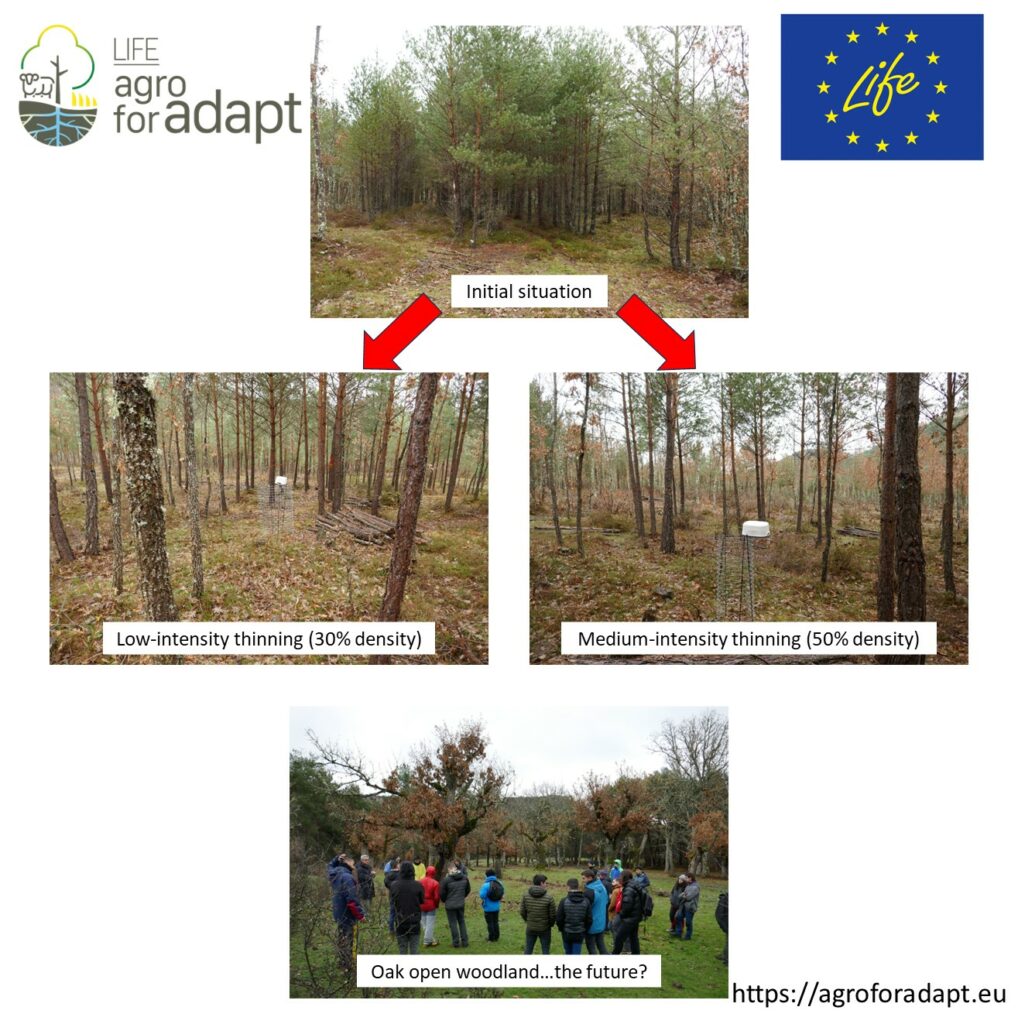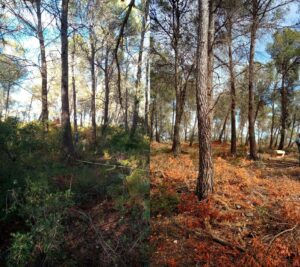Field visit on silvopastoralism with University of Lleida students
On 29 November, CTFC and Agresta organised a field day with Forestry Engineering students from the University of Lleida in the AgroForAdapt demonstration stands in Muriel Viejo (Soria, Central Spain). The Junta de Castilla y León (regional government) has implemented, in collaboration with Agresta, 26.2 ha of silvicultural works in a mixed forest of Scots pine (Pinus sylvestris) and Pyrenean oak (Quercus pyrenaica).
We have applied thinning of two intensities, leaving an area without intervention. In the coming years we will study the evolution of these three situations based on multiple indicators. The aim of thinning is to reduce tree density to:
- encourage grazing production and enable silvopastoralism: this will diversify the uses of the forest and the local bio-economy.
- increase the vitality of the trees maintained, which have been selected for their vigour and conformation, ensuring a balance between the presence of oak and pine.
- reduce the vulnerability to fire by reducing the vertical and horizontal continuity of the vegetation.
Thanks to the entry of livestock (herd of cows) we will be able to maintain in the coming years this multifunctional structure, which is more adapted to climate change.
The following interventions will be defined by the dynamics of the forest and the social demands of the coming decades...one of the options we propose is to recover a dehesa-like (open woodland) landscape, such as the grove of large pollarded oak trees located a few hundred metres from our demonstrative forest.



